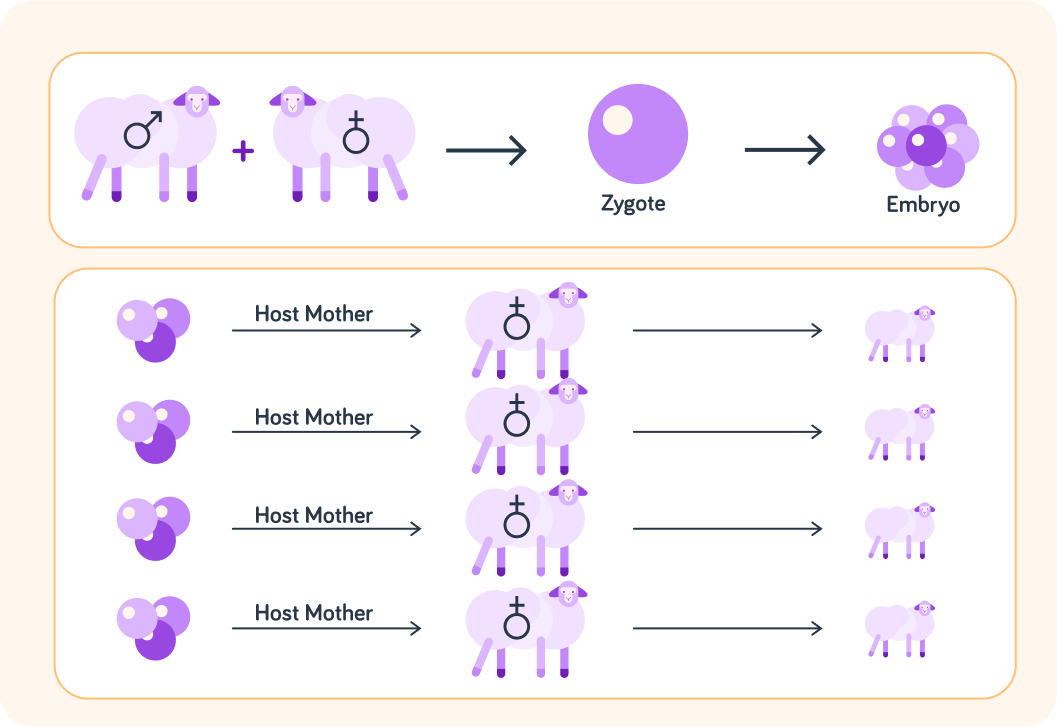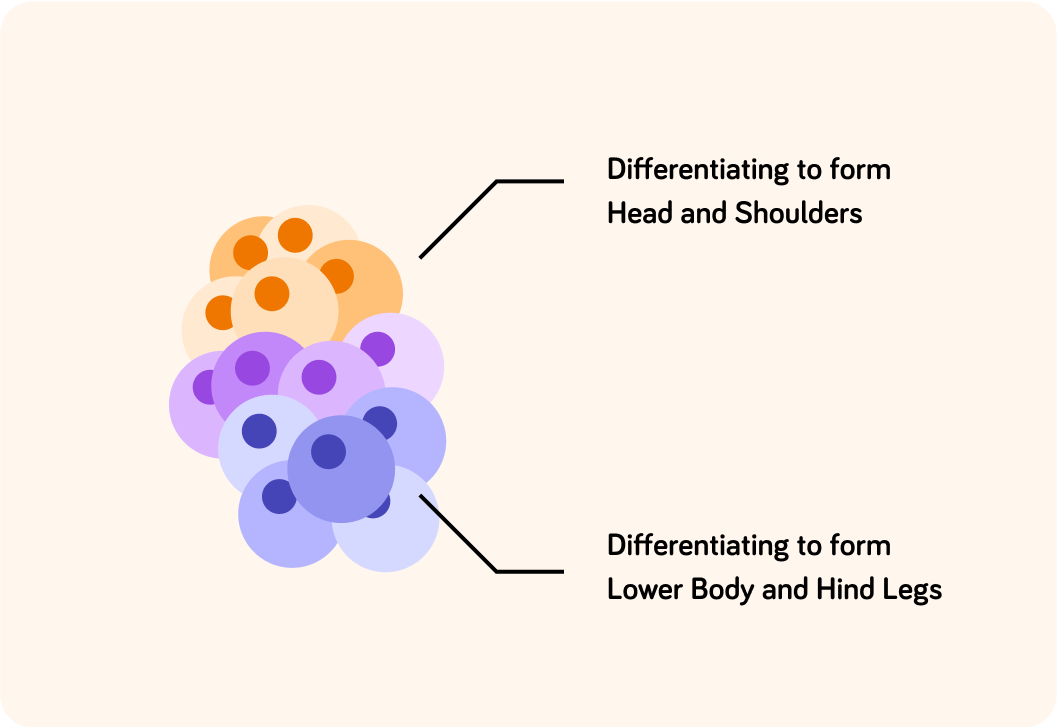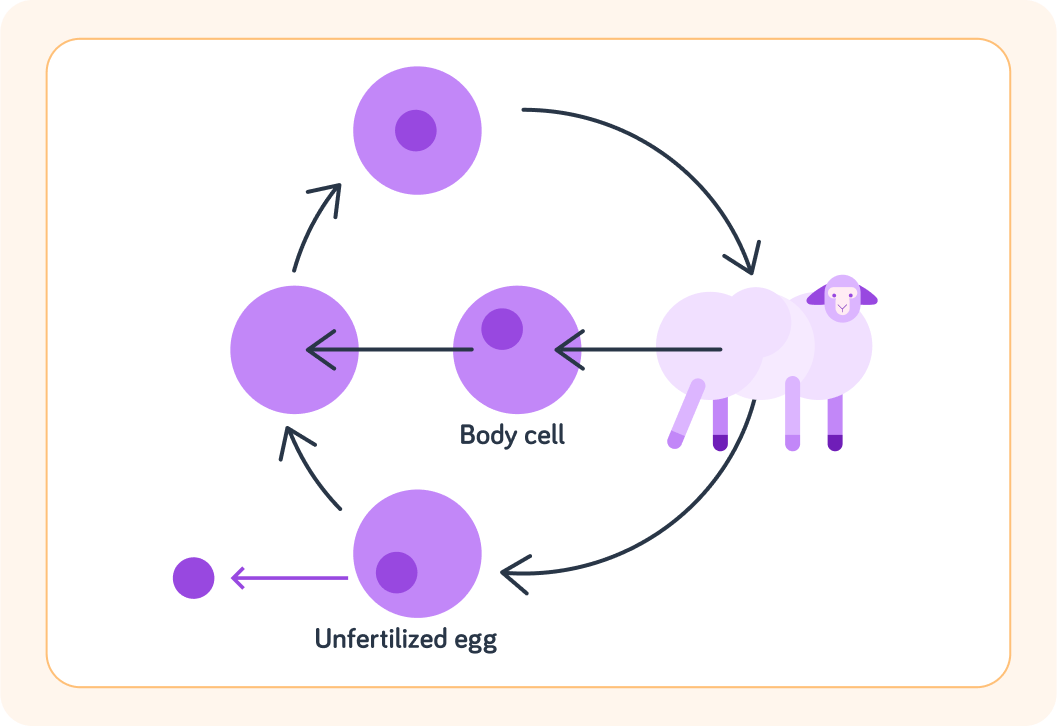YOU ARE LEARNING:
Embryo Transplants

Embryo Transplants
Stem cells are cells present soon after fertilisation. Before specialisation, these cells can be divided and grown as individual embryos inside different host mothers, producing multiple identical offspring.
Farmers, and scientists working with them, are always looking to improve the health of their animals and the yield from their herds. Which of these methods might help them do that? Pick all the options you think are correct.

You can select multiple answers
Selective breeding and genetic modification methods allow farmers and scientists to remain in control of the breeding process. With natural breeding, desirable features are not guaranteed to be passed on.
Once a breed of farm animal has been developed (maybe after decades of work!), there is still a risk of losing the desired characteristic when the animals start to breed. Why is that?

Once a desirable breed has been developed it would be ideal to be able to make exact copies of this animal to produce lots of them, with no risk of the desired characteristic being lost. What do we call an exact genetic copy of an organism?

Once an organism with the desired genetics has been developed...
we can use embryo transplanting to "duplicate" the organism and produce large numbers of identical individuals.

A zygote (fertilised egg) is allowed to develop into a small bundle of cells within the uterus of a host mother. What is this small bundle of cells called at this stage of development?


The embryo is then removed from the uterus and divided into smaller embryos. What type of cells make up the embryo that can divide later to form all the cells of the animals body?


These embryos are then transplanted into the uterus of host mothers and allowed to develop as normal. What is special about all the offspring produced in this process?
A) They are all genetically identical. B) They are all genetically similar. C) They have genetic variation.


The embryo is normally removed from the first mother at around 4-5 days of development. If we waited any longer, the transplant process might not work. What do you think might start to happen after 4-5 days?

Only a few days after fertilisation, stem cells start to differentiate and begin to develop into the cells needed in each part of the embryo.
If we divided the stem cells up at this stage, it could risk producing an embryo without all the parts needed for a functioning animal! The exact timing of this is different for each species, but it is always within a few days after fertilisation of the egg cells.

In the previous example, the zygote was produced by selective breeding.
If we needed an exact copy of just one individual, though, the process would need to be adjusted. This diagram shows that process.

An unfertilised egg can have its original genes removed and a new set put in their place. What is it that we replace in the zygote, do you think, before it develops into an embryo?
A) The cell's organelles B) The genome C) The desired genes only


After we have replaced the genome...
the rest of the process is similar to the method where we started with a male and a female that produced the desired characteristics.

In embryo transplanting, the embryo is not killed, unlike in other forms of genetic manipulation. Does this means that there are no ethical concerns with this process?

Even though embryo transplanting doesn't kill the embryo, there are still ethical and religious concerns. Not everyone thinks humans should change the course that nature intended for an embryo.
You should make up you own mind about whether you think it is acceptable or not. There is no "correct" or "wrong" opinion.
